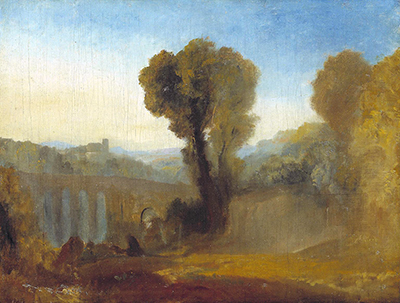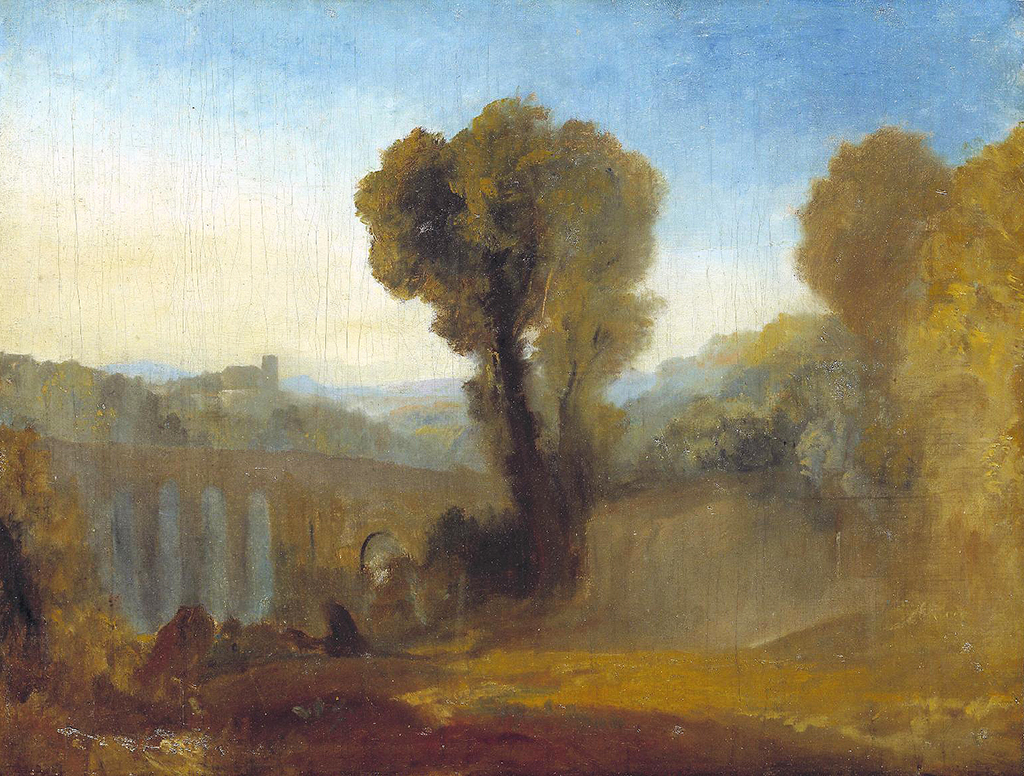This pretty landscape painting is dated at around 1827–8 and has been given a number of different titles over the years, including Ariccia Sunset, Claudian Composition and Arcueil at Dawn. We will refer to the former, original title for the purposes of this article.
Within the composition we find a tall tree placed centrally in the painting, with leaves and branches that have been well crafted by Turner. This initially captures our eyes, as well as providing a vertical strut for the overall piece. Our eyes are then deliberately drawn to the bridge which appears from behind the tree and stretches out across the canvas, eventually disappearing off to the left. We see light between the arches of the bridge, suggesting that this is a tall structure which reaches up to the same level of the hills on which we are sat. In the distance are two levels of landscape, the furthest of which is lighter and without much detail, whilst closer in we see a few buildings, perhaps a church.
The colour scheme used by the artist here is full of greens, browns and blues, with some yellowy browns for the nearest point to us. Much of the detail is left in an incomplete, abstract form where as normally Turner would go into more detail on every part of his canvas. He leaves half of the composition for the bright sky which helps to give off a positive edge to this painting, where as a view from deeper in the valley would have obviously been darker, and given off a very different atmosphere. Turner liked to travel around different parts of the UK, learning about its intricacies and also finding different angles of items that he already admired.
Some new to British art may consider him to be the seascape artist, with classic works such as Fighting Temeraire, Snow Storm and Battle of Trafalgar, with John Constable being the man who addressed the inland parts of the nation. This would neglect a large part of the former's oeuvre, such as this beautiful scene. The large tree itself could even be from the hand of Constable himself, in the way small dabs of paint are added to create a variation of colour in the foliage. Compare it to features within The Hay Wain, for examples of this. The completed artwork that we find here, Ariccia Sunset, is around one metre wide, which is actually not that large for Turner, and it was bequethed to the state upon his death. Most of that collection is now owned and displayed amongst the various Tate galleries across the country.





